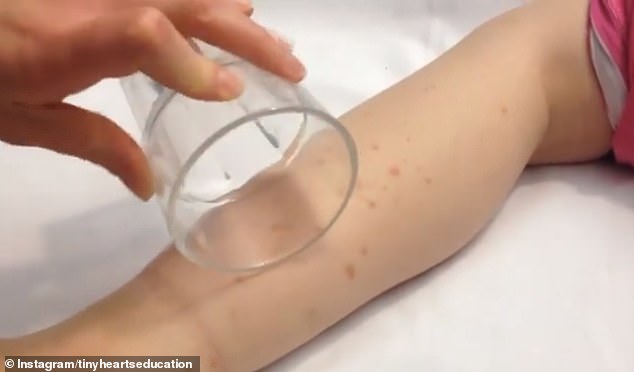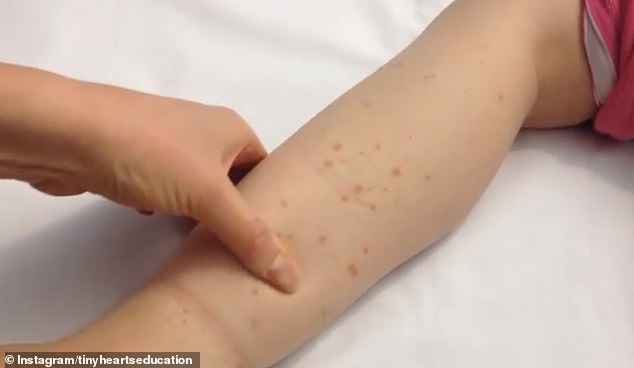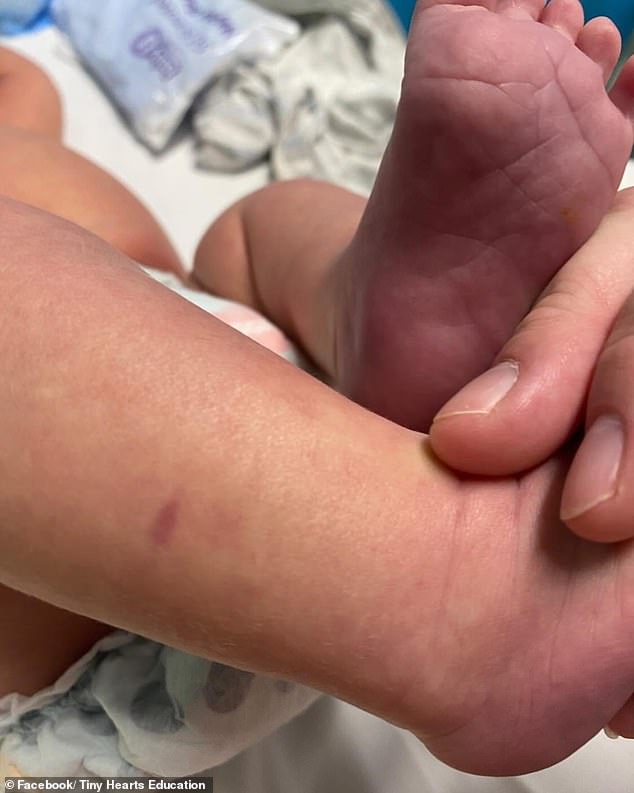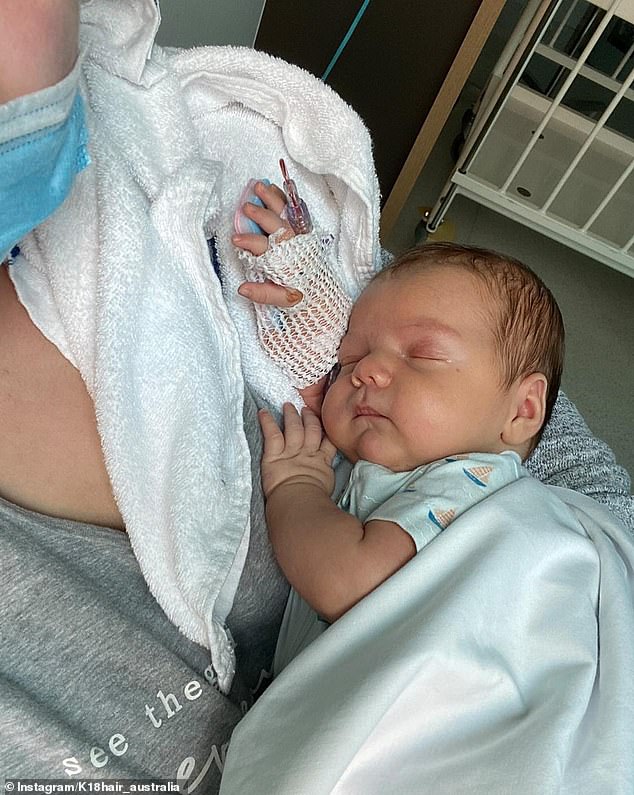Advertisement

An Australian parenting education group has unveiled the one simple rule for determining whether or not a skin rash can be life-threatening.
Tiny Hearts Education, run by former paramedic and mother Nikki Jurcutz, told the lifesaving council in a Facebook post that parents who discover a rash on their child’s body should do a “blanch test.”
A rash that turns white when pressure is applied is considered safe, while a spot that stays the same color even when pressed can be a sign of a serious illness like meningococcal disease and parents should call Triple Zero right away.
Scroll down for videos

The former paramedic and founder of Tiny Hearts Education has warned parents to take a “blanch test” on skin rashes to see if they could be life-threatening
Nikki said rashes can have many different appearances with raised bumps, flat areas, blisters, welts, bright red coloring, or a combination of features.
“They could spread, move and change over time. You can also have rashes that appear small and have bright red/purple spots or bruising,” she said.
“If you notice your baby has a rash, you need to do a test to check if the rash is turning pale.”

If a rash doesn’t turn white for five seconds under pressure from a finger or glass, it could be a sign of a serious illness like meningococcal disease
The post was accompanied by a video showing an example of a “non-bleaching” rash on a child’s leg in hospital.
She said one way to do the test is to apply pressure to the rash with a finger and hold it for five seconds.
‘What did you notice? Did it turn white and then red again? If yes – good! This is a pale rash and as long as Bub doesn’t have any other worrying symptoms, see your GP,” she wrote.
Another way to do a “blanche test” is to gently roll a glass over the rash to see if it loses its color when pressure is applied.
“If you press, hold and release and the rash doesn’t turn white, this is a non-bleaching rash and you need to call 000,” Nikki warned.
“Rashes that don’t bleach can be a sign of a serious illness, such as meningococcal infection, meningitis, anaphylaxis, or measles.”
“Non-bleaching” rashes, which can appear anywhere on the body, are caused by bleeding under the skin, and while they’re not always a sign of something ominous, they need to be seen quickly to either rule out or treat serious infections.
Earlier, a mother shared how her one-month-old baby was diagnosed with meningococcus after performing the “blanch test” on a tiny spot on his leg.
“From a small stain to a very sick little boy in less than 12 hours. Creepy!’ the woman wrote in a post.
She said her son had been restless for a few days and was “spitting up,” which she put down to gas as he didn’t have a fever.
The mother gave him a bath on Tuesday morning after he wet himself and didn’t notice a rash or spots, but when she bathed him again 12 hours later, she saw that the skin on his back, stomach and hands was mottled.

A mother has shared how she was alarmed when she saw a small purple spot on her son’s leg, which turned out to be a symptom of meningococcal disease
Mottled skin looks like streaks and patches of color on the surface.
“While my husband was massaging him, he noticed a purple spot, no bigger than my pinky fingernail, on our son’s leg that refused to bleach,” she wrote.
‘We put a glass in there to check. I’ve decided to take him to an emergency just to be safe.’
Doctors determined the little boy had meningococcal disease and he is now recovering.
The situation could have been much worse if the parents hadn’t recognized the difference between “bleaching” and “non-bleaching” rashes.
The post was inundated with comments from people relieved the boy was recovering and thanking the woman for sharing the valuable information.

The situation could have been much worse if the parents hadn’t recognized the difference between “bleaching” and “non-bleaching” rashes
‘Thank you for sharing. I doubt I would not have investigated this little sign further. I hope he recovers well,” wrote one woman.
‘Wow! I wouldn’t have classified that as a rash! Thanks for sharing and raising awareness, I’m glad Bub is fine now,” said a second.
Other moms decided to share their similar experiences.
“Just before my son was a year old identical spots appeared on his wrist and I also went to the hospital because they didn’t turn white when pressed. They didn’t mess around and give him meningococcal medication right away while waiting for the results,” one mother said.
“Luckily it turned out not to be and they put it down to an allergy to something he had eaten. To this day I have no idea what it was.’
“Our daughter got MenB when she was three years old. I thought she had the flu but luckily her doctor found a pin-sized spot on her chest,” shared another mom.

